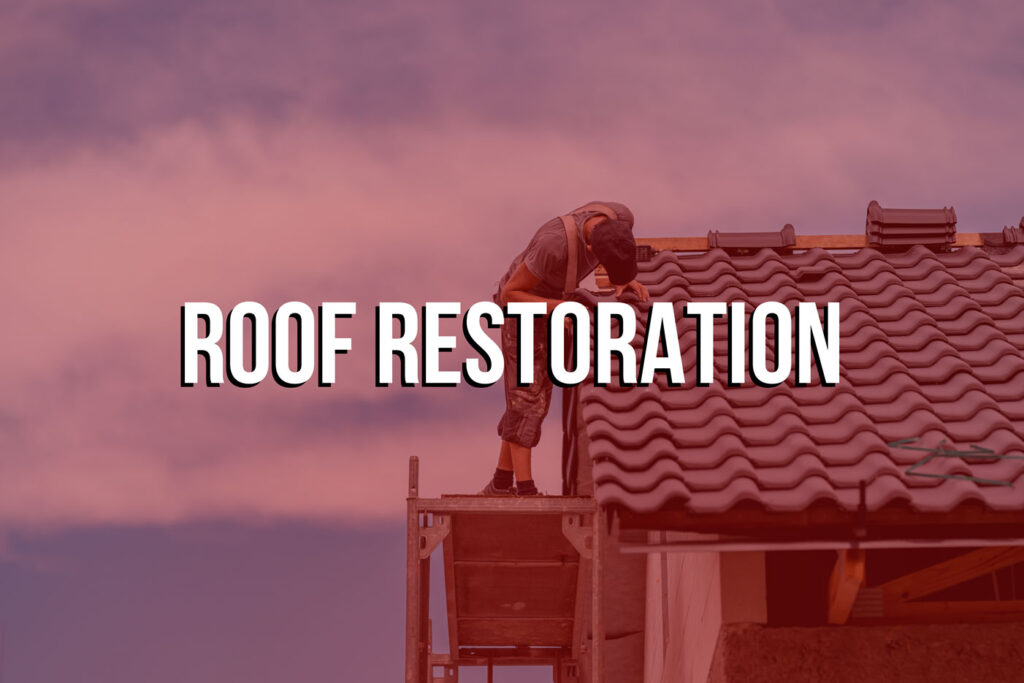- Serving London and surrounding areas
- Work for us

A roof is one of the most important parts of any home—it protects you from the elements, provides insulation, and adds to your property’s curb appeal. But over time, even the best roofs show signs of wear and tear. Instead of waiting for costly damage, roof restoration is a proactive solution that brings your roof back to life without the need for a complete replacement.
If you’ve ever wondered how the process works, here’s a step-by-step guide to roof restoration that will help you understand what to expect.
Every successful roof restoration begins with a professional inspection. Experts assess the overall condition of your roof, looking for cracks, leaks, broken tiles, moss, rust, or water pooling.
This step is crucial because not all damage is visible from the ground. A thorough inspection ensures small issues are identified early, preventing bigger (and more expensive) problems later.
👉 Learn more about professional inspections and services in our roof restoration guide.
Once the inspection is complete, the roof must be thoroughly cleaned. High-pressure washing is typically used to remove dirt, debris, lichen, and moss. This process not only restores the roof’s appearance but also prepares the surface for repairs and coatings.
Why is this step important? A clean surface ensures new sealants, paint, or membranes bond properly, giving your roof a longer lifespan.
After cleaning, damaged sections of the roof are repaired. This can include:
Replacing cracked or broken tiles
Fixing leaks around flashing and joints
Repairing ridge caps and repointing mortar
Sealing small holes in metal roofing
By addressing these issues, the roof is structurally reinforced, reducing the chance of future leaks or deterioration.
If your home has a tiled roof, re-bedding and re-pointing are essential. Over time, mortar holding ridge caps in place can crack or weaken. Professionals remove old mortar (re-bedding) and apply fresh mortar and flexible pointing compounds (re-pointing) to secure the tiles.
This step strengthens the roof while improving its appearance, keeping it neat and uniform.
With repairs completed, the next stage is sealing. A primer or sealant is applied to the surface to protect against water penetration, UV rays, and future damage. This creates a strong base layer for the final coating.
A quality primer not only boosts durability but also improves the adhesion of the topcoat.
This is the step that gives your roof its “like-new” finish. Specialized coatings are applied to restore color, add weatherproofing, and reflect heat. Modern roof paints come in a wide range of colors, allowing homeowners to refresh the style of their property while protecting it from the elements.
For metal roofs, anti-rust coatings are also used to prevent corrosion. For tiled roofs, flexible acrylic coatings provide added protection.
The restoration process ends with a final quality check. Professionals inspect the entire roof to ensure all repairs, sealing, and painting meet high standards. The surrounding area is cleaned up, leaving your home looking renewed.
Investing in roof restoration brings multiple advantages:
Cost-Effective: Far cheaper than a full roof replacement.
Extended Lifespan: Adds 10–15 years to the life of your roof.
Improved Energy Efficiency: Reflective coatings keep your home cooler.
Increased Property Value: A fresh roof enhances curb appeal.
Peace of Mind: Protects against leaks and weather damage.
The frequency depends on the roofing material, weather conditions, and maintenance. On average:
Tile and shingle roofs may need restoration every 10–15 years.
Metal roofs may last longer but still benefit from re-coating every 15–20 years.
While some homeowners may attempt DIY fixes, professional roofers have the expertise, tools, and safety training to deliver lasting results. Roof work can be dangerous, and improper repairs often lead to more damage.
Choosing certified experts ensures that the restoration process is done right the first time, with warranties for added peace of mind.
A roof restoration is an investment in your home’s future. By following these steps—inspection, cleaning, repair, sealing, and coating—you not only protect your property but also improve its appearance and efficiency.
If your roof is showing signs of age or damage, don’t wait for costly leaks. Contact a trusted local roofer to discuss your options. To learn more about professional services, visit our roof restoration page.
Monday to Sunday: 6:00 AM – 8:00 PM (Open Daily)
Subscribe to our newsletter for the latest updates and offers.
© [2010 [A&A Roofing]. All Rights Reserved. Designed By Spectrum Media Solutions.